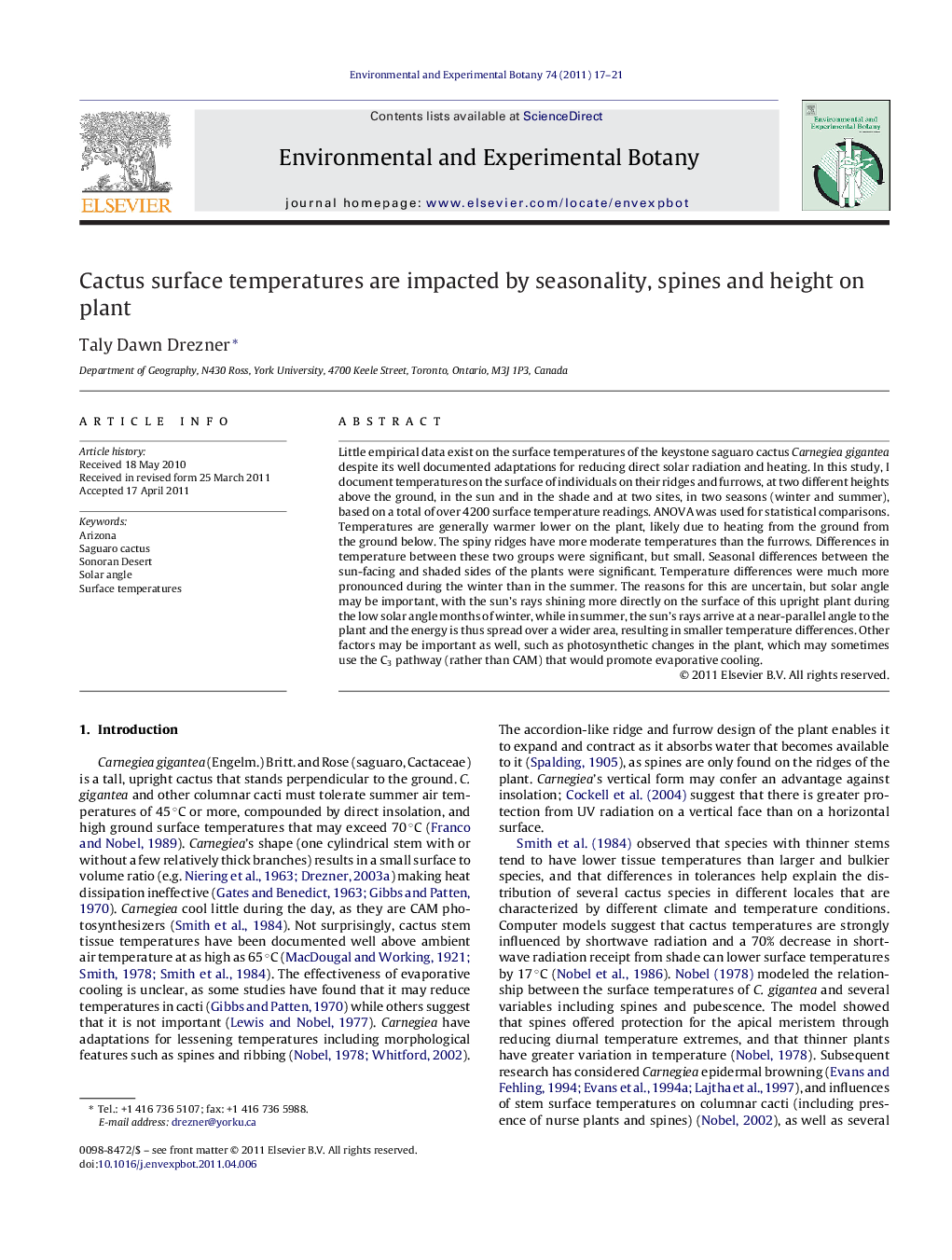| کد مقاله | کد نشریه | سال انتشار | مقاله انگلیسی | نسخه تمام متن |
|---|---|---|---|---|
| 4554789 | 1628103 | 2011 | 5 صفحه PDF | دانلود رایگان |

Little empirical data exist on the surface temperatures of the keystone saguaro cactus Carnegiea gigantea despite its well documented adaptations for reducing direct solar radiation and heating. In this study, I document temperatures on the surface of individuals on their ridges and furrows, at two different heights above the ground, in the sun and in the shade and at two sites, in two seasons (winter and summer), based on a total of over 4200 surface temperature readings. ANOVA was used for statistical comparisons. Temperatures are generally warmer lower on the plant, likely due to heating from the ground from the ground below. The spiny ridges have more moderate temperatures than the furrows. Differences in temperature between these two groups were significant, but small. Seasonal differences between the sun-facing and shaded sides of the plants were significant. Temperature differences were much more pronounced during the winter than in the summer. The reasons for this are uncertain, but solar angle may be important, with the sun's rays shining more directly on the surface of this upright plant during the low solar angle months of winter, while in summer, the sun's rays arrive at a near-parallel angle to the plant and the energy is thus spread over a wider area, resulting in smaller temperature differences. Other factors may be important as well, such as photosynthetic changes in the plant, which may sometimes use the C3 pathway (rather than CAM) that would promote evaporative cooling.
► The columnar keystone Carnegiea gigantea cacti's surface temperatures were studied.
► Surfaces closer to the ground were warmer.
► Ridges were more moderate than furrows.
► The difference in temperature between the sun- and shade-facing sides were significantly different by season.
► The larger gap in temperature in winter may be due to more direct solar rays hitting the plant's surface.
Journal: Environmental and Experimental Botany - Volume 74, December 2011, Pages 17–21